Key takeaways from the Quirk’s Event – London
The Quirk’s Event – London was held on May 7-8 and offered sessions on a broad range of topics. From Gen Z insights to effective communication strategies, insights leaders learned about different case studies from leading brands and research companies to get a better understanding of what is happening in the marketing research and insights industry. In this article, I’ll explore several of the topics speakers focused on at the London event.
Insight communication and application: The role communication plays within insights teams
While researchers understand their insights and data, communicating them to other departments and CEOs remains a challenge. They must determine how much information to give others to ensure they understand their importance without overwhelming them with data. The insights they present must also align with the organization's purpose and culture.
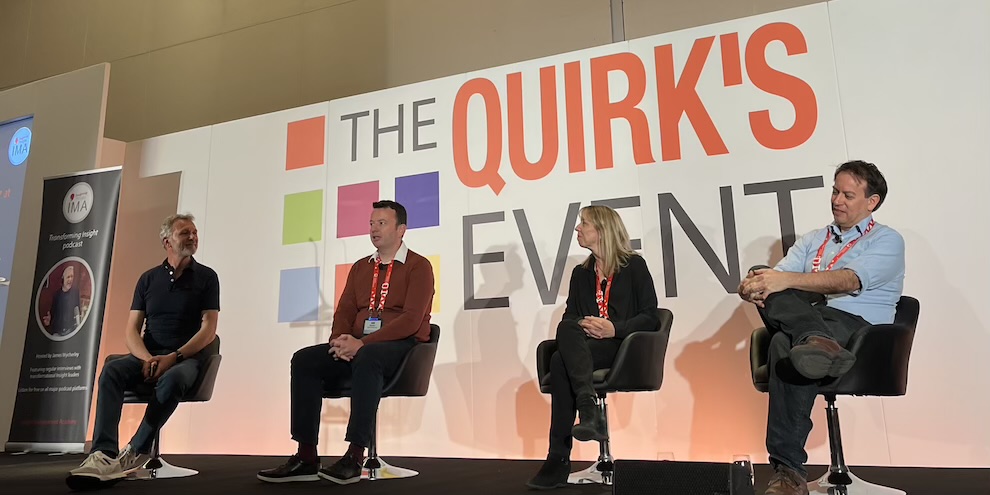
In the session “Transforming insight at Springer Nature and Spire Health Care,” presenters Clare Gough, founder of Insight in Focus; Will Ranner, head of insight at Spire Healthcare Group; Dan Penny, director of market intelligence at Springer Nature; and James Wycherley, CEO of Insight Management Academy, emphasized the importance of insights teams connecting to the corporate purpose. The role of insights varies depending on the organization’s goal and they must reflect the business culture to help power business success.
Samsung also highlighted the importance of communication in the session titled, “Guiding the way: Effective insight communication at Samsung.” Samsung presenters Tim Jude, Kevin Macdonald, Ikram Ladjali and Dan Wheeler argued that insights teams must share small portions of information with stakeholders.
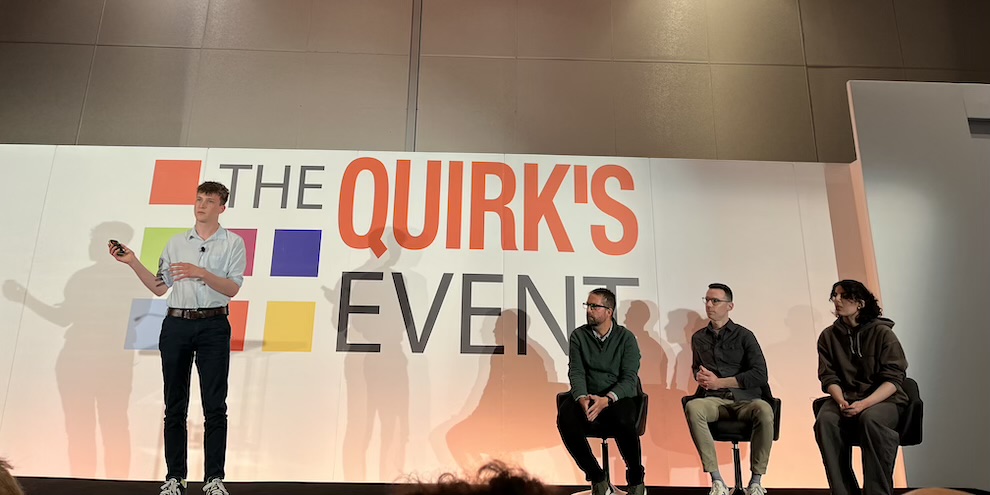
The insights shared must be memorable, understandable, persuasive and must convey the right information. Researchers must stay on track when presenting their insights and to do so they must cover:
- The situation: Establish the stable state of the world and the commercial background.
- The complication: What is the question raised by the change in the stable situation. Explain the current problem from the stakeholder’s perspective.
- The question: What is the commercially grounded, consumer-first question that needs to be considered?
- The answer: Determine the solution to the issue.
The Samsung team encouraged insights teams to remove the numbers until they are asked for. It’s best to present quick insights with few statistics as too many numbers can distract from the issue at hand.
Category growth and brand strategy
Young brands must determine how they will present themselves to their markets. The session “Planted: Using category entry points to disrupt the plant-based meat category” highlighted the importance of using research to understand gaps in the market. Brand growth revolves around physical availability. A product must be easy to find, have a wide distribution network, a range of options and more to achieve success.

Brands, especially new ones, must firmly grasp the value of category entry points. After conducting research, Planted selected six market points where they could differentiate themselves from competitors. Ultimately, this strategy led them to be a prominent brand that filled a gap in the market.
Gen Z and entertainment: Media consumption is fast and increasingly interactive
Different aspects of Gen Z insights were covered at the Quirk’s Event – London. Some sessions focused on Gen Z and entertainment including one titled, “From scroll to screen: Film insights among Gen Z.” The film industry has undergone rapid change with the fast turnaround of new releases from cinema to streaming.
LADbible Group’s Emily Driscoll and Carissa Kingsley-Mwananshiku explained that there has been a steady decline in younger audiences going to the cinema. Twenty-five percent go once a year or less, compared to 32% of Millennials, 63% go every few months and only 12% go weekly. However, the appetite is there as 73% of Gen Z prefer to watch films at the theater.
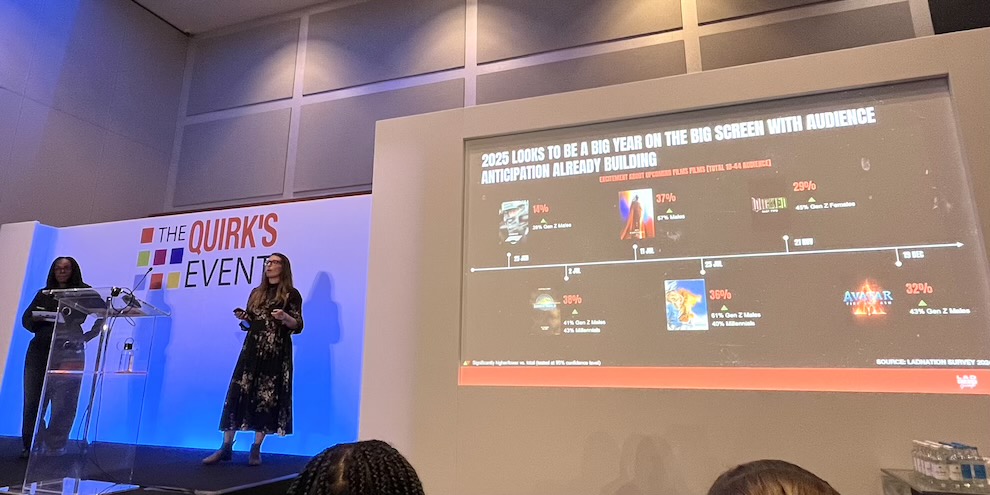
Gen Z engages with film content in different ways than other generations. Cast interviews have a high appeal to Gen Z as it allows them to understand who actors are and shows a realness behind the film. They enjoy behind the scenes content and have found a way to be involved with the movie via social media. Instead of just watching a movie, they want to create content about it whether it be on TikTok, YouTube or Letterboxd.
The session titled, “Soundtrack of the self: Understanding how personality can shape music preferences” highlighted that the music industry is also undergoing many changes and going through a period of fragmentation. The old model of defining segments for the market has become too broad and reductive. Kantar Profiles and Sony aimed to develop a more nuanced understanding of music audiences.
They found commonalities within audiences using machine learning and data modeling techniques. Extroverts were found to enjoy creating playlists, listening to music to make friends and are not nostalgic for music from the past. Instead, they prefer to stay informed on current music trends and lean toward upbeat and catchy music. Listeners of dance music were future focused and tended to remember the past fondly, focusing on happy memories and achievements. Bob Dylan fans were older, sustainable shoppers, lacked faith/spirituality and interested in diet/lower salt intake.
Facing financial struggles
There were mentions of financial struggles and the session by UM London and Dynata titled, “Money Talks 2.0: The Youth Tax – Understanding the impact of financial struggles on young people’s lives and the role brands can play to address these challenges,” established that 87% of young people feel their generation is worried about not having enough money.
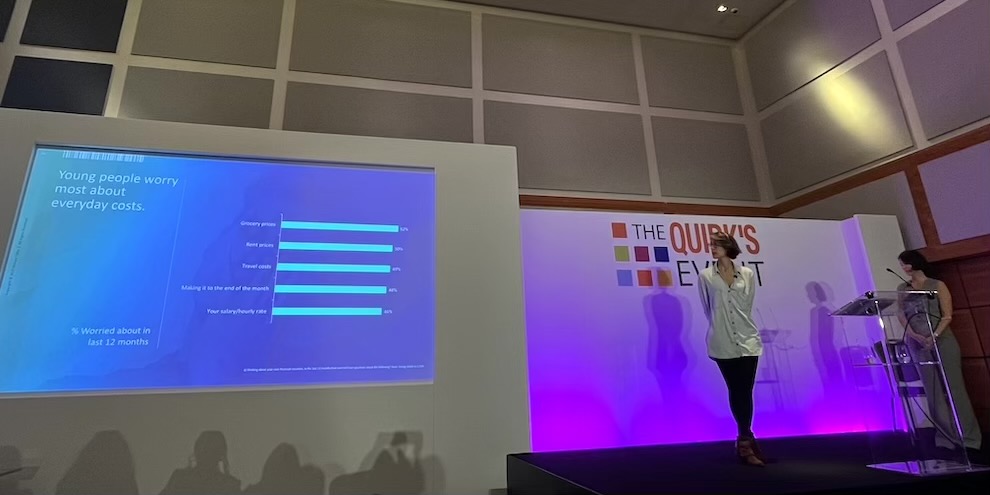
Others feel pressure to be financially successful (84%), feel their generation worries about mental health (84%), pressure to look attractive (83%), social media (82%), finding a job (81%) and finding somewhere to live/housing (79%). Young people worry most about everyday costs including grocery prices (52%), rent prices (50%), travel costs (49%), making it to the end of the month (48%) and salary/hourly rates (46%).
Segmentation: Understanding audiences in a changing world
Penguin Random House’s session, “Lessons from a decade of our audience segmentation at Penguin,” explained how the company’s segmentation research was designed to drive audience-centric thinking. When comparing today’s trends to those in 2015, things look drastically different. Today, it is common for book-based discussions to mention BookTok, which has had a huge impact on the book industry and has driven sales. Things are also looking very different culturally and politically compared to 10 years ago.
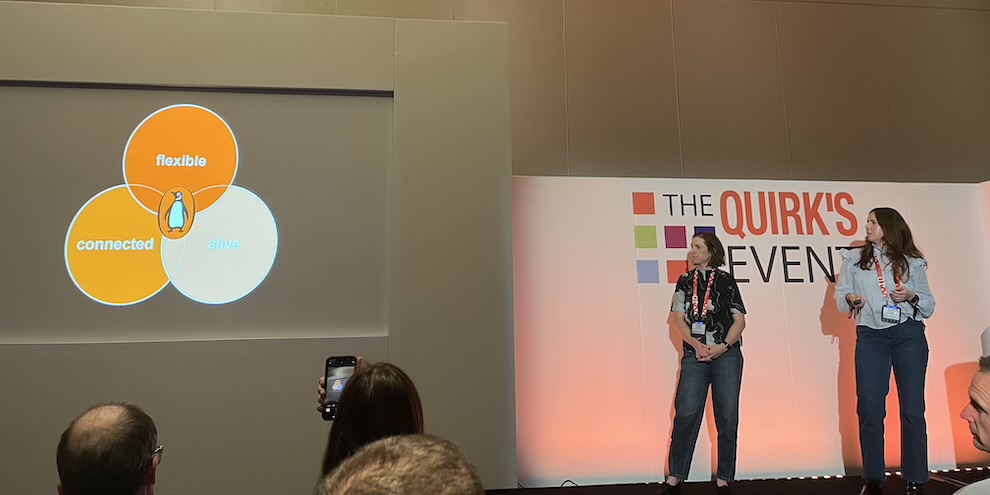
Some segmentation factors to consider include life stages, motivations and cultural interests. At Penguin Random House, segmentation is embedded within every aspect of the publishing process:
- Strategy: Tracking and decoding market trends.
- Editorial: Trends and concept testing.
- Marketing: Segment media profiling.
- Design: Jacket testing.
- Sales: Shopper insights for retailers.
Through segmentation, companies can receive live updates from customers and their respective markets which allows them to stay on top of trends.
